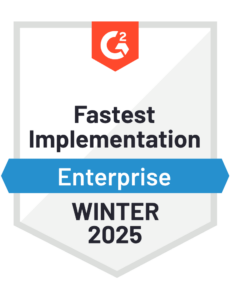5 Journal Entry Best Practices to Improve Efficiency in the Office of Finance
Blog post
Share
Journal entry is one of the most impactful processes to the outcome of an organization’s financial reporting. However, when an organization has to manage thousands of journal entries a month, the process can quickly become tedious, risk-filled and complex.
Here are five journal entry best practices to help optimize the journal entry process through standardization and, eventually, automation.
Best Practices for Journal Entry
Standardizing the way financial processes are completed — not only in the journal entry process, but all parts of the Record to Report (R2R) — will help finance and accounting teams drive efficiency while staying accurate and compliant across all entities.
#1: Make Standardized Templates for JEs
The majority of an organization’s journal entries will be similar in form, so make templates for most of the journal entries.
#2: Don’t Try to Fit Every Journal Into ONE Standard Template
Not every journal entry will fit into one template; look back at your organization’s financial history and identify the types of journals that are posted most often (categories like tax, intercompany, etc.). From there, make a template for those categorized journals.
For every other journal that does not fit into those categories, make a generalized template for the occasional entries that will fall outside the most common functions. Preparing for journal entries in this way allows finance leadership to better control the process, while allowing entities to perform necessary, non-standard activities in a manner that’s easily identifiable and reportable on a central level.
#3: Clearly Define the Journal Entry Approval Process
Does your organization have a clear, structured approval process? Here’s what a typical journal entry approval process tends to look like:
- After the journal entry is (manually) prepared, the data goes through a complex flow of manual handoffs to further prepare the data, correct if needed, perform additional calculations and re-format
- Then the entry goes through a series of frustrating, drawn-out communication (usually via email and phone calls, which further clutters both the preparer and approvers’ schedules).
Without a standardized approval workflow, an excess amount of time is spent communicating and adjusting the entry before it is even posted. Not only is that inefficient and challenging, but it’s difficult to track in a reportable way.
Consider the Benefits of Journal Entry Automation
Journal entry automation helps uphold these best practices and further refine the journal entry process. It’s important to consider the ROI and benefits your organization could achieve with an automated journal entry solution.
#4: Automate Approval Workflow and Posting of Routine Journals
As discussed before, it is important to create a standardized journal entry approval process, and an automated journal entry solution can easily enforce the organization’s pre-created policies and procedures and the segregation of duties (so team members are never both preparing and approving entries). Ensuring the workflow is followed promotes greater visibility and control in the journal entry process, improving the accuracy of the entire Record to Report. Additionally, an automated journal entry solution allows finance and accounting teams to automate routine and recurring journal entries, rather than manually preparing them every time.
#5: Address and Solve Overdue Journals with Journal Entry Automation
Because there tend to be so many journals to approve, it’s crucial that there’s visibility into which journals are overdue and which need attention the most quickly. Visibility into overdue journal entries also helps leadership identify and solve the reasons the journals are overdue so that a more efficient, effective course of action can be taken.
An automated journal entry solution can also increase efficiency of approvals while decreasing risk by setting approval times on certain journals, so the entries are being approved and posted on time. When the journal hasn’t been approved within the set time, an automatic notification will be sent to the approver to remind them. The late approval status can be reported on, so the organization can identify the criteria that results in late journal approvals. Not only does this allow the organization to improve their internal processes but continue to reduce risk by ensuring a misstatement won’t have to be released because of a late journal.
Find this content helpful?
If you loved this blog, there’s more where that came from! Discover additional ways that Trintech can help you streamline your financial processes:






